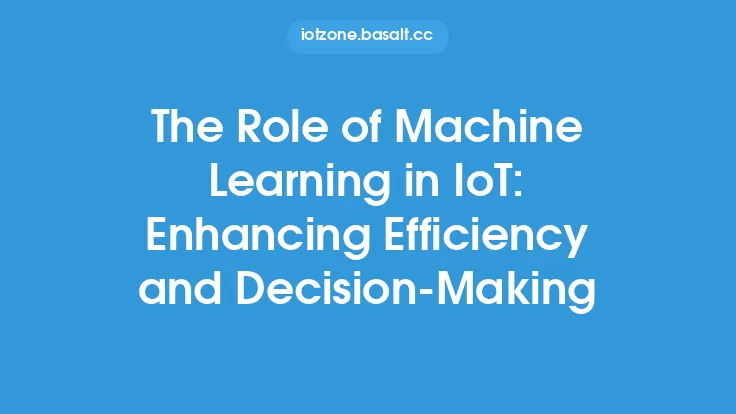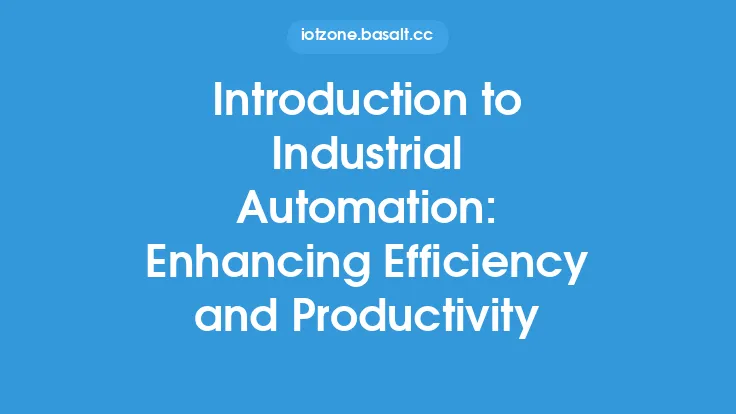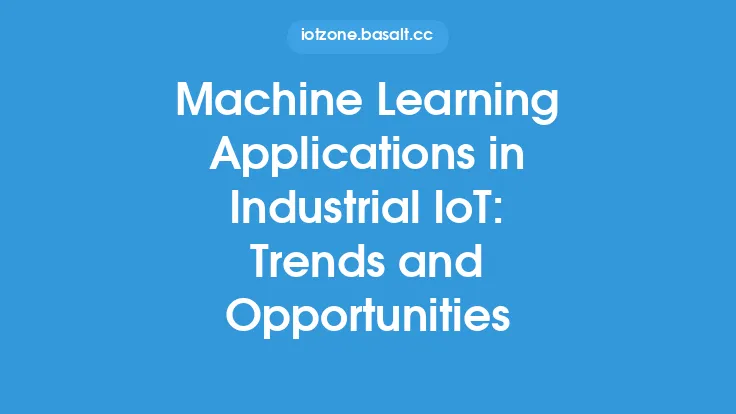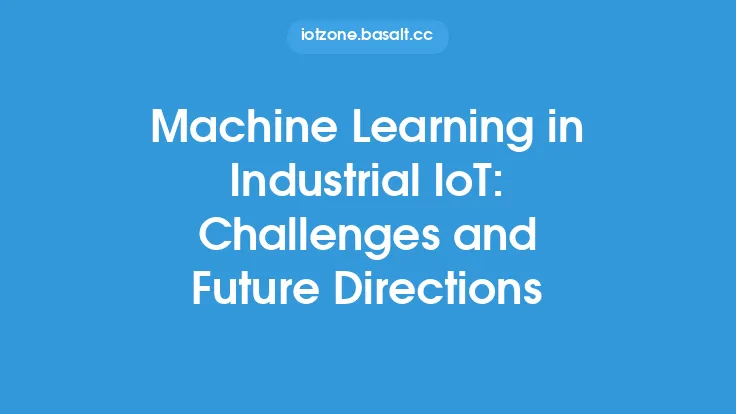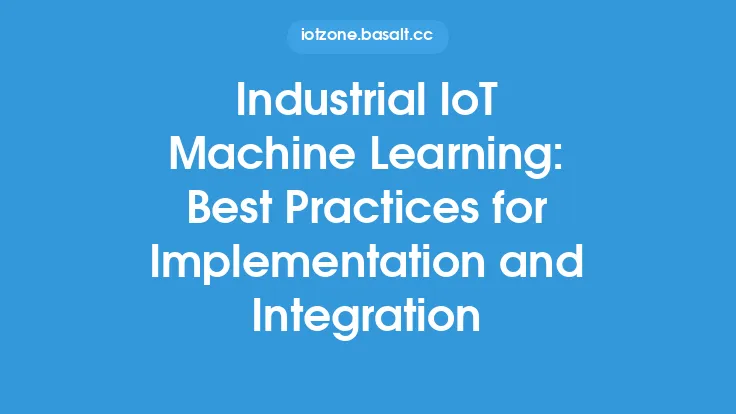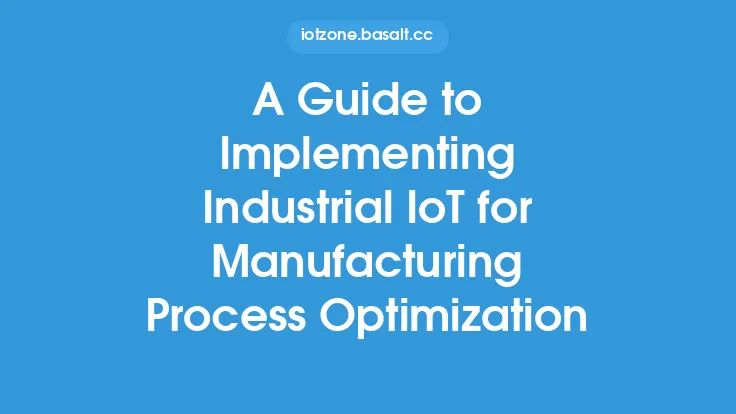The integration of Industrial Internet of Things (IIoT) and Machine Learning (ML) has revolutionized the way industries operate, leading to significant improvements in efficiency, productivity, and decision-making. By combining the capabilities of IIoT, which enables the connection and communication of physical devices, with the analytical power of ML, industries can unlock new levels of performance and competitiveness. In this article, we will delve into the world of IIoT and ML, exploring how these technologies work together to drive improved efficiency in industrial settings.
Introduction to Industrial IoT
Industrial IoT refers to the network of physical devices, vehicles, home appliances, and other items that are embedded with sensors, software, and connectivity, allowing them to collect and exchange data. This technology has transformed the industrial landscape, enabling real-time monitoring, automation, and optimization of processes. IIoT devices can range from simple sensors and actuators to complex systems such as manufacturing equipment, robots, and drones. The data generated by these devices can be used to improve operational efficiency, reduce costs, and enhance product quality.
Machine Learning Fundamentals
Machine Learning is a subset of artificial intelligence that involves the use of algorithms and statistical models to enable machines to learn from data, make decisions, and improve their performance over time. In the context of IIoT, ML can be applied to analyze the vast amounts of data generated by connected devices, identify patterns, and detect anomalies. ML algorithms can be categorized into three main types: supervised learning, unsupervised learning, and reinforcement learning. Supervised learning involves training models on labeled data to make predictions, while unsupervised learning involves identifying patterns in unlabeled data. Reinforcement learning, on the other hand, involves training models to make decisions based on rewards or penalties.
Integration of IIoT and Machine Learning
The integration of IIoT and ML is a powerful combination that enables industries to unlock new levels of efficiency and productivity. By applying ML algorithms to IIoT data, industries can gain insights into their operations, predict maintenance needs, and optimize processes. For example, in a manufacturing setting, IIoT sensors can collect data on equipment performance, temperature, and vibration. This data can then be fed into an ML model to predict when maintenance is required, reducing downtime and improving overall equipment effectiveness. Similarly, in a logistics setting, IIoT devices can track the location and condition of goods in real-time, while ML algorithms can analyze this data to optimize routes, reduce fuel consumption, and improve delivery times.
Key Technologies and Concepts
Several key technologies and concepts are essential to the integration of IIoT and ML. These include edge computing, cloud computing, big data analytics, and artificial intelligence. Edge computing refers to the processing of data at the edge of the network, closer to the source of the data. This approach can reduce latency, improve real-time decision-making, and enhance overall system performance. Cloud computing, on the other hand, involves the use of remote servers to store, process, and analyze data. Big data analytics involves the use of advanced algorithms and statistical models to extract insights from large datasets. Artificial intelligence, which includes ML, refers to the use of machines to perform tasks that typically require human intelligence, such as learning, problem-solving, and decision-making.
Applications and Use Cases
The applications and use cases for IIoT and ML are diverse and widespread. In the manufacturing sector, IIoT and ML can be used to predict maintenance needs, optimize production processes, and improve product quality. In the energy sector, IIoT and ML can be used to optimize energy consumption, predict energy demand, and improve grid management. In the transportation sector, IIoT and ML can be used to optimize routes, reduce fuel consumption, and improve safety. Other applications and use cases include predictive maintenance, quality control, supply chain optimization, and inventory management.
Benefits and Challenges
The benefits of integrating IIoT and ML are numerous and significant. These include improved efficiency, increased productivity, enhanced decision-making, and reduced costs. However, there are also several challenges associated with the integration of IIoT and ML. These include data quality issues, security concerns, interoperability challenges, and the need for specialized skills and expertise. To overcome these challenges, industries must invest in data management and analytics, implement robust security measures, and develop strategies for interoperability and integration.
Future Directions and Trends
The future of IIoT and ML is exciting and rapidly evolving. Several trends and directions are expected to shape the landscape of IIoT and ML in the coming years. These include the increasing use of edge computing, the growth of 5G networks, the development of more advanced ML algorithms, and the integration of IIoT and ML with other technologies such as augmented reality and blockchain. As IIoT and ML continue to evolve, we can expect to see new applications, use cases, and innovations emerge, driving further improvements in efficiency, productivity, and competitiveness.
Conclusion
In conclusion, the integration of IIoT and ML has the potential to transform industries and drive significant improvements in efficiency, productivity, and decision-making. By understanding the fundamentals of IIoT and ML, industries can unlock new levels of performance and competitiveness. While there are challenges associated with the integration of IIoT and ML, the benefits are numerous and significant. As IIoT and ML continue to evolve, we can expect to see new applications, use cases, and innovations emerge, driving further improvements in efficiency, productivity, and competitiveness.
